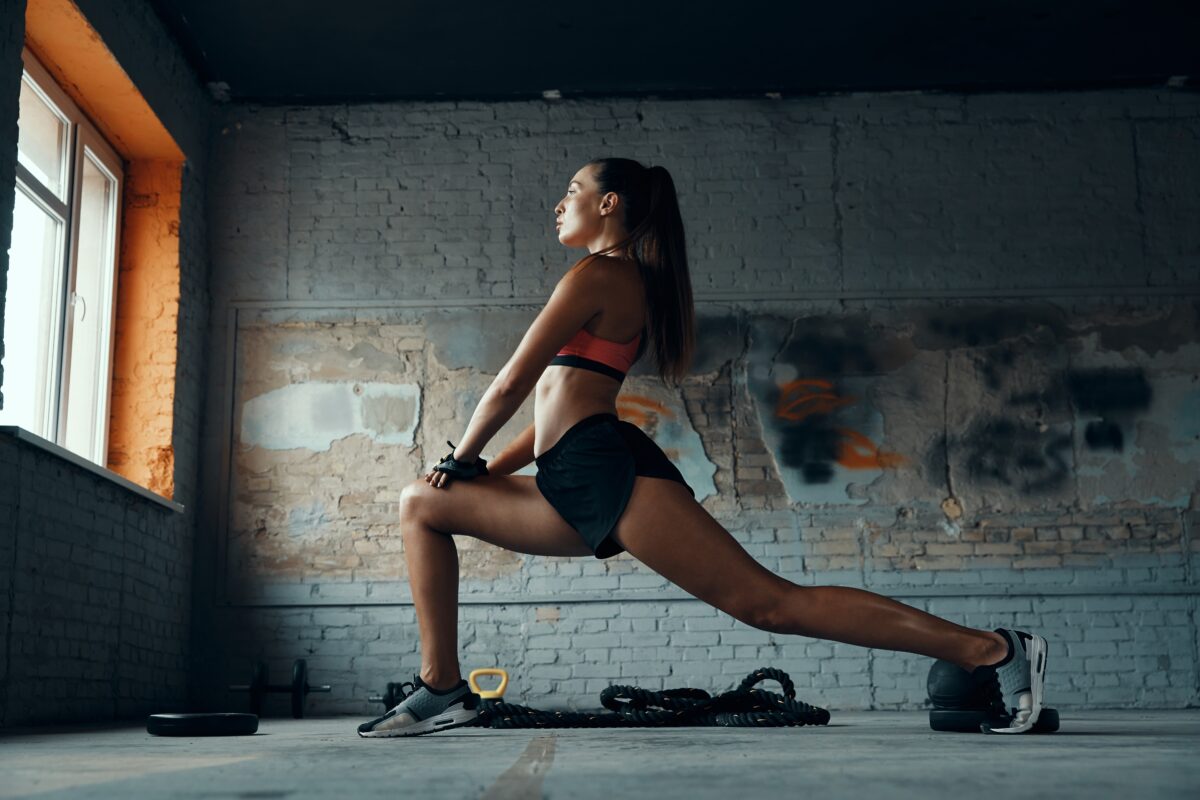
If you’re struggling with toning up post 40 and feel that you are losing the battle with your midlife middle, you’re not alone. Personally, as soon as I hit 40, it was like a switch had been flipped. I’d always been able to eat and drink what I wanted, but suddenly things started hanging around a little bit too much in certain areas that I simply couldn’t shift …
My answer was to hit the gym. I tried eating breakfast later, supper earlier, and keeping a 12-hour fasting window overnight. I didn’t quite manage intermittent fasting, but you get the picture. And guess what? Nothing worked. In fact, I gained weight.
Fast forward a few years, and we now know that as we age, we need a different approach—more variety in exercise, especially adding strength training and increasing daily protein intake. But here’s something you may not know: it’s not just what kind of exercise we do, but how much and how we do it that really matters.
I highly recommend listening to the Mel Robbins podcast episode featuring Dr. Stacy Sims, a world-renowned exercise physiologist and nutrition scientist. She explains that in midlife, women need to train differently.
Feel the Burn? Not Anymore.
I grew up on Jane Fonda workouts and endless step classes—it was all cardio, all the time. I thought that’s what I needed to lose weight in midlife too. But Dr. Sims says otherwise.
Ever wonder why you and your husband can follow the same workout and meal plan, and he gets leaner while you see zero change? Same here—and it drives me mad. Turns out, men and women respond differently to exercise and dieting, especially as we age.
We now know that strength training puts positive pressure on bones to keep them strong—especially important for women as declining oestrogen increases the risk of brittle bones. But it doesn’t stop there: resistance training also supports brain health by promoting neuroplasticity, and it boosts metabolism. Triple win.
The key? Don’t over-stress your body. Midlife women don’t respond well to too much metabolic stress. Think: heavier weights, fewer reps, more recovery. Good form is crucial too, since soft tissue injuries become more common with age. So, take it slow, focus on alignment, and build up gradually. In midlife, we need to be training in a way that supports our hormones, metabolism and health.
Wondering whether you should hit the gym machines or stick to dumbbells? Machines are often designed for 6-foot-tall men, so they may not fit your body unless adjusted properly. Dumbbells, on the other hand, recruit your stabilizing muscles—making them a great choice for most women.
And remember, exercising with a friend is a huge boost for mental health, so consider that too. Prefer solo workouts? Pop on a podcast or your favourite playlist and get going, there really is something for everyone.
Nutrition: Fuel First
Two of the biggest mistakes many of us make according to Dr Sims? Black coffee on waking and exercising on an empty stomach. Part of waking up is down to cortisol coming up anyway, but a black coffee first thing in the morning can keep cortisol elevated. For women, working out without fuel can actually lead to muscle loss and an increase in visceral fat (the kind that gathers around your tummy) because we are stressing our systems. A small protein hit before exercise—like a bowl of Greek yogurt or a protein shake—helps stabilize blood sugar, supports post exercise recovery, and can even positively influence your circadian rhythm leading to a better night’s sleep.
Nutritionist Emma Bardwell shares a lot of helpful advice on her Instagram page on how to get more protein into our diets and in her upcoming book : The 30g Plan, she shows us how to reach the guidelines of 30g of protein per meal, up our fibre intake and eat over 30+ plans a week to help us lose body fat, feel energised and improve our metabolic and digestive health. Emma’s recipes are easy and tasty. Her tips include:
- Eat protein with every meal, plus plants and healthy fats.
- Aim for 2 servings of oily fish a week (or take a good quality fish oil or algae oil for a vegan option).
- Minimize snacking, alcohol, and ultra-processed foods.
- Include 3 sources of calcium daily for bone health.
Supplement Spotlight: Creatine Monohydrate
The latest buzzword? Creatine. If you haven’t heard about this, then let me enlighten you. Creatine is naturally found in the body and 95% of it is in your muscles, ready to help you spring into action if required, the rest is found in your brain, liver, kidneys etc. Research has indicated that creatine plays a crucial role in the regeneration of ATP (adenosine triphosphate) which is a source of energy for cells. So, if you are suffering with menopause symptoms and are desperate to get on top of your fatigue and brain fog, then creatine could be for you. The main dietary sources of creatine are animal products, such as meat, but soy is also a good plant source.
A number of recent studies have shown that by adding 3-5g of creatine monohydrate to your morning routine can help in the following areas:
- Muscle growth
- Workout stamina
- Post work out recovery and injury prevention
- Cognitive function
I have just bought myself some from MyProtein and am adding a teaspoon to my protein shake each morning – I will keep you posted on the results!
Words by Nicola Hughes


